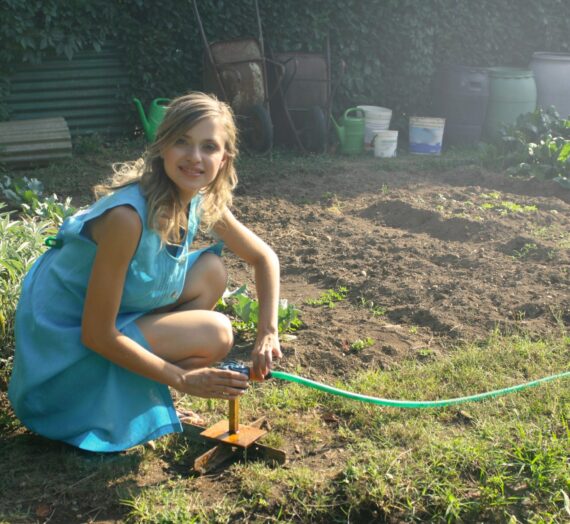10 Practical + Impactful Ways to Live More Sustainably
You may ask – why do we want to know the ways to live more sustainably? In fact, we are living in Anthropocene epoch where almost everything is being governed by the way we make our choices! As consumers, we have power to alter the functioning of the ecological systems. Our behaviors and actions are making impact on not only the environment but also of the species which inhabit the planet Earth.
According to the Living Planet Report 2020, since the industrial revolution, the wildlife population has seen a decrease of about 68% between 1970 to 2016 (WWF). But, the number could be even higher, because there are many species which are yet to be monitored and discovered.
Hence, it is the need of the hour that we reconnect with nature, minimize our ecological footprint, and restore the health of our ecological systems because it is the right environmental conditions which make Earth a habitable planet. Although it is not easy to reverse the damages that have been done to our complex ecological systems, each of us can take part in saving the planet by adopting 10 ways to live more sustainably.
1. Switch to Reusable, say No to Single-used Plastic
In today’s fast-paced world, the industry for single-used consumable products is booming. According to estimates, the world’s oceans receive about 8 million tons of plastic each year, which is causing deleterious effects on marine life, and is also posing serious health risks for human health (UNEP, 2017). We can save ourselves and other species from this plight by switching to reusable bags, reusable cutlery, biodegradable alternatives, such as edible cutlery; compostable packaging; and bio-based bags.

Examples of ways to cut down on single-used items in daily life:
- Bring your own reusable bag instead of using plastic bags when shopping for groceries.
- Bring your reusable water bottle around. S’well water bottle is one of the finest and most durable brand that will keep you water hot or cold for 12 hours+
- Carry a reusable cutlery set and straw with you in your purse or bag
- Bring your own glass container when getting takeout or for leftovers
→ Check out the light-weighted and portable cutlery set by Topbooc Store
2. Waste Less, Compost More
Another ways to live more sustainably is to reduce food waste. Food wastage is a societal dilemma which has strengthened its roots. According to the Food and Agriculture Organization, roughly one-third of globally produced food goes to waste every year, which could be used either to feed under-nourished children or to produce compost for a kitchen garden. Composting is one of the best ways to reduce your household waste. It saves the food from ending up into landfills and the compost provides rich soil to your plants. To start composting at home, you can get a composting bin with aeration. The next step would be to fill the composting bin with the food scrap and covering it with a lid. Microbial activity would expedite the process, and you will only have to check for the moisture content and temperature periodically, untill the compost is ready.
→ Take a look at the Best 8 Kitchen Compost Bin of 2020
3. Grow Local, Eat Local

Imported food uses a lot of fuel and generates greenhouse gases during the delivery process. They add weights to our eco-systems. So, selecting food locally is a way to cut down the carbon footprint. On top of cutting down the greenhouse gases emissions during shipment and storage of imported food, choosing local vegetable will also support local farmers and local economy. Besides, local food is also fresher because of the shorter transporting time.
You can also adopt organic gardening which reduces the use of pesticides and herbicides. One of the most convenient ways to grow local vegetation is to start a kitchen, rooftop or community garden.
→ Watch the video Food Eco-footprint to know more about sustainable food choices
4. Offset Travel Footprint

Transport sector accounts for 16.2 % of global carbon emissions, which mainly includes the emissions due to fuel combustion (Hannah and Max). For regular travel, we can cut off our vehicular emissions by carpooling or adopting sustainable ways of transportation. For shorter travel distance, Bus-rapid transit and cycling are considered to be the most viable alternatives to personal vehicles. Using sustainable ways of travel will ease traffic congestion and air pollution.
→ Read more about Cycling, the better mode of transport
5. Beware of Energy Vampire Appliances

One of the ways to live more sustainably, is to identify the energy vampire appliances in our household! Energy vampire appliances are the electrical devices which use and drain electricity even when they are turned off. The use of such devices increases our carbon footprint and poses a burden on our electricity bill. There are various appliances at our homes, such as LCDs, monitors, mobile chargers, printers, speech-recognition devices, etc., which do not turn off completely and go to standby mode. It is our incentive to identify and unplug these devices completely to save cost and energy.
→ Check out the most popular energy saving LED light by Sylvania on Amazon
6. Adopt Ethical and Sustainable Fashion

With the latest trends in styling and influence of fashion icons, we are all constantly trying to “catch up” to the latest fashion trends. However, while thinking on what the latest trending items should go into our wardrobe, we must ask ourselves questions like – Would I wear this for a long period of time? Where did the raw material from? How was the item manufactured? Are they using sustainable materials? Donating or reusing old clothes would be ways to cut down waste. However, the best practice is to reduce purchase or selecting the right brand in the first place. Selecting eco-friendly clothing brand is one of the ways to live more sustainably.
Below are some guidelines and buzz words to look for when selecting sustainable clothing brand:
- Use organic or recycled material
- Eco-friendly manufacturing practices
- Transparent sourcing and supply chain
- Use Low-impact and non-toxics dyes
- Eco-friendly packaging
- Offer repair program
- “Gives back to the society” program
→ Check out the up-and-coming sustainable clothing brand Prana on Amazon here
7. Reduce Paper Use
Don’t we all love printing out our documents in the office? Many documentation are printed out for manual data management and hardcopy for record management purpose. Before we print anything out, have we considered what it would cost the earth?
Firstly, paper making not only requires a substantial quantity of wood and water but also consumes energy. Secondly, printing also generate paper waste. Furthermore, the chemicals used in the process contaminate the consumable water resources, when untreated wastewater is discharged from the industry. We can minimize the rate of deforestation and water contamination, by simply sharing electronic files or emails. Or think twice before your print!
→ Learn about Rocketbook – a digital notebook that provides a classic pen and paper experience.
8. Wash Clothes Sustainably
Many of us rarely wash our clothes with cold water. But do we know that 90 per cent of the energy consumed by washing machines goes to heating the water alone? This energy can be conserved using cold water. If stains are not tough, we should choose to use cold water to wash our clothes. Similarly, drying the clothes in open areas rather than in driers, would not only conserve energy, but would also cut down the energy usage and spending on electricity bills.
→ Read more on cold water washing and air-drying
9. Reclaim ecology

Habitat loss is the most prominent threat causing massive species extinction. Human invasion in the wildlife’ territory, agricultural intensification, and introduction of exotic species is pushing a large number of species to the brink of extinction. Reclaiming ecology is as simple as planting a tree. Interesting, there are other ways to restore and re-establish habitats to rebuild the species’ population. For examples, you can plant native plants; set up bird feeders; and build bug hotels in the backyard.
→ Learn to make DIY bird feeder and bug hotel
10. Rainwater Harvesting

Rainwater harvesting is one of the ways to live more sustainably. It is a excellent way to conserve one of the most valuable asset in our planet – water. Collecting, storing, and utilizing rainwater can minimize the risk of stormwater runoff and erosion resulting from it. As it is free of contaminants, it can serve as a vital resource for irrigation. Installment of rainwater collection systems is economical, when compared to making up for the damage occurring as a result of improper stormwater management. You can get started by installing downpipes which divert rainwater from the roof to rain barrels placed on the ground floor. In order to minimize the chances of contaminants or impurities getting into the barrel, you may use a filter or screen beneath the barrel’s covering lid. To utilizing the stored water, you can connect a tap or irrigation system to the barrel.
→ Follow a guide to install rainwater harvesting system
References
- WWF (2020). Living Planet Report
Retrieved from: https://livingplanet.panda.org/en-gb/
- UNEP (2017). UN Declares War on Ocean Plastic
Retrieved from: https://www.unenvironment.org/news-and-stories/press-release/un- declares-war-ocean-plastic-0
- FAO (2011). Global Food Losses and Food Waste
Retrieved from: http://www.fao.org/3/mb060e/mb060e00.htm
- Hannah Ritchie and Max Roser. Emissions by Sector
Retrieved from: https://ourworldindata.org/emissions-by-sector




